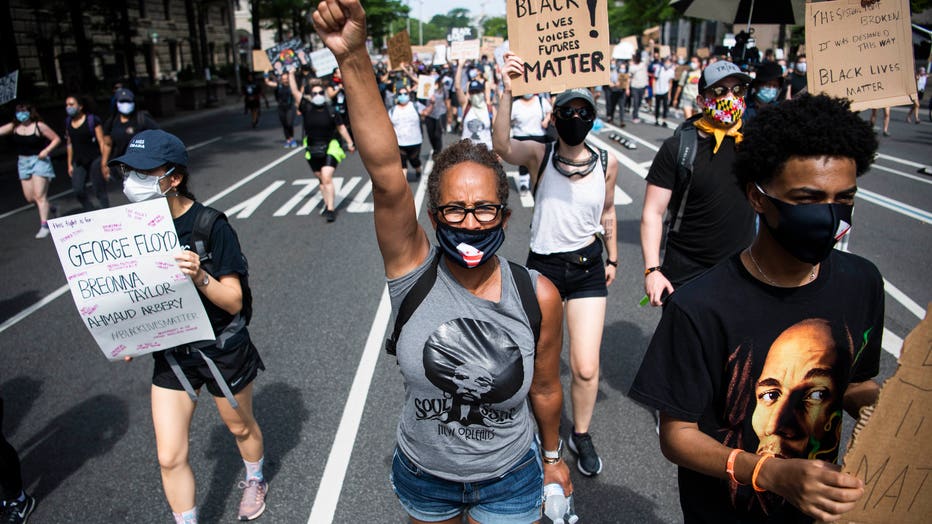How to protest while keeping yourself and others safe amid COVID-19 pandemic
MINNEAPOLIS - Protests over police brutality and racial inequality have erupted nationwide in the wake of George Floyd’s death. Meanwhile, the threat of COVID-19 remains — leading to elevated fears in the health community that huge crowds of people will lead to a new surge in cases.
The demonstrations over Floyd, a black man who died after video showed a white Minneapolis officer pressing a knee into his neck, are coming at a time when many states are beginning to relax stay-at-home orders.

Demonstrators march on Pennsylvania Avenue towards the Capitol to protest the death of George Floyd on June 3, 2020.(Photo By Tom Williams/CQ-Roll Call, Inc via Getty Images)
Health experts say that crowds of people, some without masks and yelling, can pose a health risk to others in the midst of the pandemic.
RELATED: CoronavirusNOW.com, FOX launches national hub for COVID-19 news and updates
Dr. Thomas Russo, the head of infectious diseases at Jacobs School of Medicine and Biomedical Sciences at the University at Buffalo, says there are certain precautions protesters should take in order to decrease their chances of getting infected and to keep others safe.
“As a general rule, being outside is better than inside,” Russo told The Conversation, an online nonprofit news publication “That’s because the larger air volume disperses the virus, and a larger space facilitates social distancing.”
But Russo says large crowds of people in close quarters, who may be chanting or shouting and may not be wearing masks and eye protection, will probably negate whatever advantages someone might get from being outside.
A person who has the virus can be infectious up to six days before symptoms develop and up to at least nine days after, based on the limited data available to date.
“That’s a pretty big window,” Russo said. “We think the peak time for spreading the virus is two to three days before symptoms start and a few days after, but we are still learning about this virus. We don’t even know the infectious dose – how much exposure is needed before a person becomes infected.”
There’s also the issue of silent carriers, or those who show no symptoms but can still spread the disease.
Talking can spread enough of the virus to infect someone nearby. Russo says exertion and shouting further increase those chances — which is common at protests.
“You also use more oxygen when you exert yourself, so you breathe more heavily and increase your air exchange to compensate. If your respiratory rate is up, that’s going to increase your risk of inhaling infectious particles,” Russo said.
If I want to protest, what can I do to stay safe?
Wear a mask and eye protection, Russo says.
“Keep your distance from other people, too. Remember that there’s nothing magical about the 6-foot rule. You could be 10 feet away and still get a sufficient dose to be infected if you’re in the right place at the right time,“ he told the new site.
When I get home, what should I do to protect friends and family?
Even those who feel healthy could still be infected and spread COVID-19 to others in their household and in their social circle.
This week, the Minnesota Department of Health urged anyone who has attended a vigil, rally or protest following Floyd’s death to get tested for COVID-19. But access to testing my be limited.
Russo says the safest way to protect loved ones is to “immediately and religiously wear a mask for three weeks post-protest, given the incubation time and infectious window for this virus, if self-quarantining is not an option.”
This story was reported from Cincinnati. The Associated Press contributed.


